|
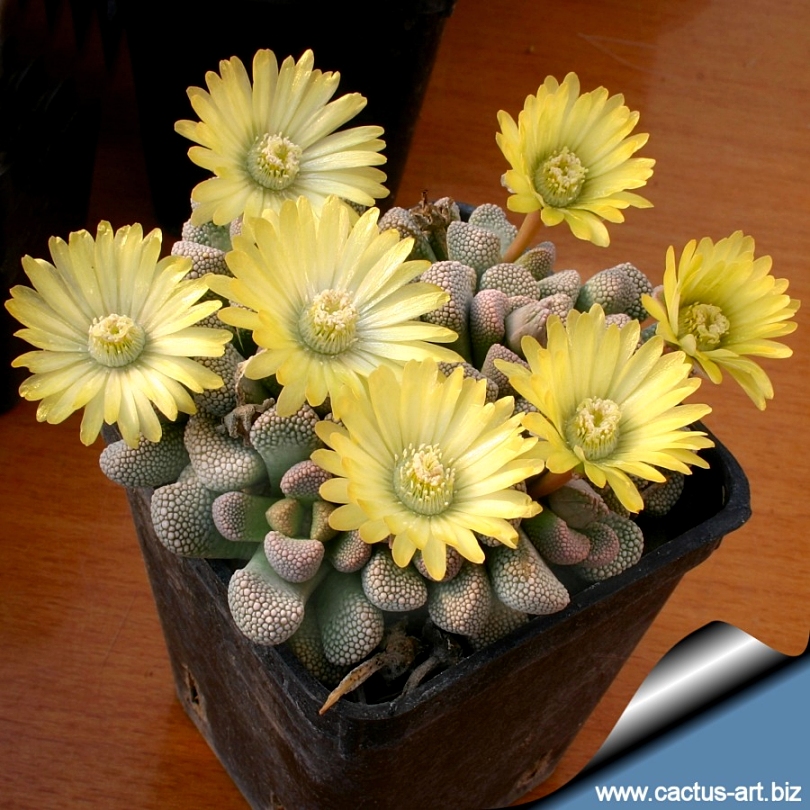
T. primosii Titanopsis SB816 Platbakkies Bushmanland
These plants are not very common and
are usually only found by
specialists but are worthwhile, choice and attractive succulents even
when still young. They are slow growing plants which will give pleasure
for years. |
|
|
Description:
Titanopsis primosii (now called T. schwantesii)
is a mat forming succulent with clusters of basal rosettes up to 5 cm
wide. It is similar to T. calcarea
,which is more a summer grower.
Leaves: Short, fleshy with rounded ends, and chunky white, grey or
flesh-coloured regular warts which look very rock- like in habitat.
(Leaves of
T. calcarea are considerably larger, flatter with a more
spoon-shaped apex and a mix of large and small warts ) Old leaves will
die off very slowly.
Flowers: With usual canary yellow mesemb ‘daisy’ form, opening in
the afternoon in early spring. (T. calcarea flowers in autumn/winter)
|
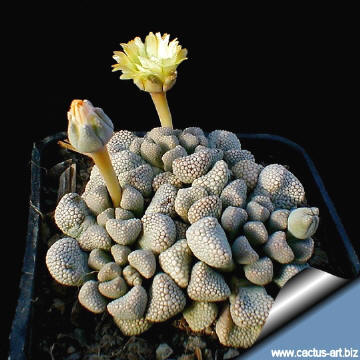 |
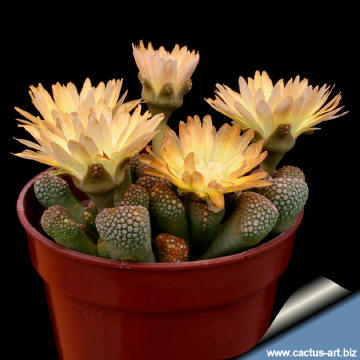 |
|
Genus Titanopsis: There are three to six
species, depending on botanists' opinions. Some botanists have now
lumped T. lüderitzii and T. primosii in with T. schwantesii.
The species list for Titanopsis is considered to be:
|
|


Advertising
|
|
|
|
Family: Mesebrianthemaceae (Aizoaceae)
Scientific Name: Titanopsis primosii
Synonym: Titanopsis schwantesii
Origin: South Africa.
Habit: Comes from winter rainfall areas but will easily adapt to
a summer watering regime.
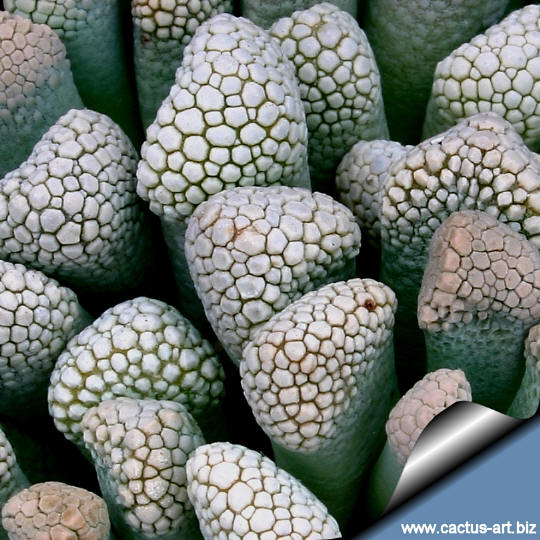
|
|
|
|
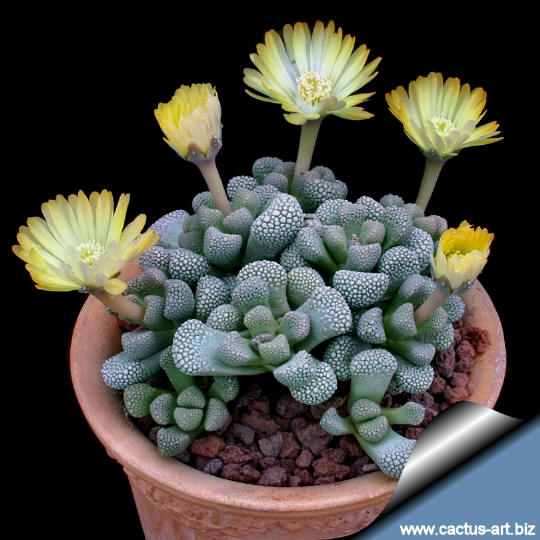
Cultivation: This species is easy to grow and clumps readily,
forming a beautiful succulent mat. This is a winter grower species, but
in cold climates we expect most growth in spring and autumn when the
weather is cool but the sun is strong. Needs moderate water when growing
in late fall and early spring. Keep somewhat dry the rest of the time.
It will need a little water even in summer, just enough to stop
excessive shrivelling. Over-watering makes the old leaves die off more quickly,
and can also produce rot. Like all living rocks, they thrive in porous
soils with excellent drainage. It can tolerates high heat and heavy
frost to -10° C. Enjoy bright shade in summer and full sun
during the other
seasons.
Propagation: They grow quickly from seed or by
division of larger clumps, including a piece of the rootstock.
|
|